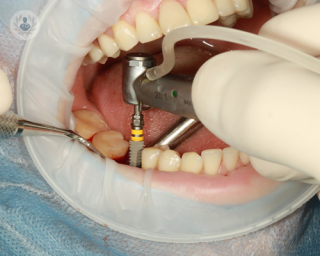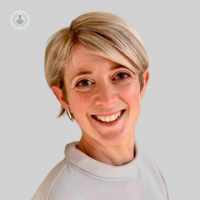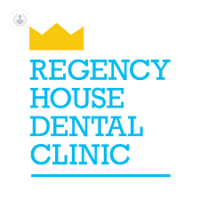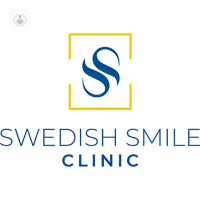What are dental bone grafts?
Dental bone grafts are performed in dentistry to increase the volume of bone in the jaw before an implant is placed. It is a technique that is required when a patient does not have enough healthy bones in their mouth, which are capable of supporting dental implants. The deterioration of the mouth's natural bones may be caused by gum disease, face injury or trauma, or an empty space after a tooth was removed.

Why are bone grafts used in dentistry?
Dental bone grafts are used to achieve treatment goals, such as:
- Saving teeth - Periodontal disease can cause bone loss, which leads to the tooth becoming loose.
- Tooth extractions - It's common to use bone grafting material in a tooth socket after it has been removed to make a dental implant easier
- Dental implants - Implants require good bone density and volume to achieve a higher success rate.
How do bone grafts work in dentistry?
There are several different types of dental bone grafts, which are used depending on the severity of bone loss and the location. The different types include:
Socket graft
The purpose of a socket graft is to prevent the atrophy of the alveolar bone before it can occur. A human donor is required and is placed into the socket, which also prevents the collapse of the socket. Following this, you will be ready for a dental implant after four to six months. The grafts also minimise pain post-surgery.
Lateral ridge preservation graft
This type of graft, which is from a human donor, is used to increase the width of the jawbone so that it can accommodate a dental implant. It takes four to six months to heal.
Block bone graft
This is necessary when there are large defects to the jaw. A small block of bone from the jaw is used and placed into the defect. It is held in place with titanium screws. It takes four to six months to heal.
Sinus lift procedure
Equine bone is used for these to expand the graft. This procedure is necessary when the patient needs a dental implant in the upper jaw, which is not strong enough to hold an implant on its own.
Are dental bone grafts painful?
Dental bone grafts are a very common procedure and they are not painful. Typically, the patient is sedated throughout the procedure. There will be no pain as the bone graft heals and once it has done, it will be time for the dental implants.
10-28-2015 01-18-2024Dental bone grafts
What are dental bone grafts?
Dental bone grafts are performed in dentistry to increase the volume of bone in the jaw before an implant is placed. It is a technique that is required when a patient does not have enough healthy bones in their mouth, which are capable of supporting dental implants. The deterioration of the mouth's natural bones may be caused by gum disease, face injury or trauma, or an empty space after a tooth was removed.

Why are bone grafts used in dentistry?
Dental bone grafts are used to achieve treatment goals, such as:
- Saving teeth - Periodontal disease can cause bone loss, which leads to the tooth becoming loose.
- Tooth extractions - It's common to use bone grafting material in a tooth socket after it has been removed to make a dental implant easier
- Dental implants - Implants require good bone density and volume to achieve a higher success rate.
How do bone grafts work in dentistry?
There are several different types of dental bone grafts, which are used depending on the severity of bone loss and the location. The different types include:
Socket graft
The purpose of a socket graft is to prevent the atrophy of the alveolar bone before it can occur. A human donor is required and is placed into the socket, which also prevents the collapse of the socket. Following this, you will be ready for a dental implant after four to six months. The grafts also minimise pain post-surgery.
Lateral ridge preservation graft
This type of graft, which is from a human donor, is used to increase the width of the jawbone so that it can accommodate a dental implant. It takes four to six months to heal.
Block bone graft
This is necessary when there are large defects to the jaw. A small block of bone from the jaw is used and placed into the defect. It is held in place with titanium screws. It takes four to six months to heal.
Sinus lift procedure
Equine bone is used for these to expand the graft. This procedure is necessary when the patient needs a dental implant in the upper jaw, which is not strong enough to hold an implant on its own.
Are dental bone grafts painful?
Dental bone grafts are a very common procedure and they are not painful. Typically, the patient is sedated throughout the procedure. There will be no pain as the bone graft heals and once it has done, it will be time for the dental implants.


Dental implant procedures: What's involved?
By Dr Nik Vourakis
2025-01-13
Dental implants are a popular and effective solution for replacing missing teeth, providing a strong foundation for fixed or removable replacement teeth designed to match your natural teeth. Understanding what’s involved in the dental implant procedure can help you prepare for the process and ensure the best possible outcome. Here to explain further is leading dental implant surgeon Dr Nik Vourakis. See more


Dental implants: how to choose the right dentist
By Mr Ali Abdellatif
2025-01-11
When it comes to having a dental implant inserted there are certain things you should take into consideration with choosing the dentist for you. We've talked to one of our leading dentists Mr Ali Abdellatif for his expert opinion on how to ensure the best results of a dental implant. See more
Experts in Dental bone grafts
-
Dr Eleftherios Martinis
DentistryExpert in:
- Dental implants
- Oral surgery
- Bone reconstruction
- Dental bone grafts
- Sinus lift
- Zygomatic implants
-
Dr Dinesh Vegad
DentistryExpert in:
- Dental implants
- Guided implant surgery
- Immediate loading implants (Teeth in a day)
- Tooth replacement
- Dental bone grafts
- Dental implants maintenance
-
Dr Luis Barbosa
DentistryExpert in:
- Dental implants
- Dental implants maintenance
- Dental bone grafts
- Bruxism
- Impacted tooth
- Smile design
-
Dr Eduardo Crooke
DentistryExpert in:
- Invisalign
- Invisible braces
- Dental bone grafts
- Bruxism
- Impacted tooth
- Teeth cleaning
-
Ms Lisa Greaney
Oral & maxillofacial surgeryExpert in:
- Chin surgery (mentoplasty)
- Dental bone grafts
- Oral surgery
- Orthognathic surgery
- Skin cancer on face
- Facial reconstruction
- See all

One To One Dental Clinic (121)
One To One Dental Clinic (121)
80 Harley Street
No existe teléfono en el centro.
By using the telephone number provided by TOP DOCTORS, you automatically agree to let us use your phone number for statistical and commercial purposes. For further information, read our Privacy Policy
Top Doctors

Regency House Dental Clinic
Regency House Dental Clinic
28 St Peter's St, St Albans AL1 3NA
No existe teléfono en el centro.
By using the telephone number provided by TOP DOCTORS, you automatically agree to let us use your phone number for statistical and commercial purposes. For further information, read our Privacy Policy
Top Doctors

Swedish Smile Clinic
Swedish Smile Clinic
35 Devonshire Pl, Marylebone, London W1G 6JP
No existe teléfono en el centro.
By using the telephone number provided by TOP DOCTORS, you automatically agree to let us use your phone number for statistical and commercial purposes. For further information, read our Privacy Policy
Top Doctors
-
One To One Dental Clinic (121)
80 Harley Street, Central LondonExpert in:
- Dental Implants (replacing teeth)
- Orthodontics
- SMILE
-
Regency House Dental Clinic
28 St Peter's St, St Albans AL1 3NA, St AlbansExpert in:
- Braces
- Crowns
- Cosmetic dentistry
- Dental implants
- Dental check up (adults)
- Dental check up (children)
-
Swedish Smile Clinic
35 Devonshire Pl, Marylebone, London W1G 6JP, W1G Marylebone LondonExpert in:
- Porcelain veneers
- Cosmetic dentistry
- Dental implants
- See all
- Most viewed diseases, medical tests, and treatments
- Trigeminal neuralgia
- Snoring
- Chronic headache
- Facial feminisation surgery
- Head and neck cancer
- Neck lump
- Botulinum toxin (Botox™)
- Platelet-rich plasma
- Sialendoscopy
- Cleft palate







